Abstract
The correlation of bacterial lipid composition with antibiotic resistance was investigated with particular emphasis on those organisms in which resistance may be related to membrane or envelope structure or function, as in resistance to tetracyclines and polymyxin. Chloroform-methanol-extractable lipids, phosphatidyl ethanolamine fractions, and both fatty acids of these lipid fractions and total fatty acids were studied by using thin-layer chromatography, gas chromatography, and infrared spectroscopy. Consistent quantitative differences were found between the fatty acid compositions of sensitive and resistant strains. Most notable was the fact that, in gram-negative organisms, resistant strains showed decreases in cyclopropane acids as compared with sensitive strains. These changes were found to be inherent in the strains and not due to growth stage or culture age. No significant qualitative differences were noted. In contrast, no such variation in fatty acid content was observed in penicillin-sensitive and resistant strains of gram-positive cocci. As significant alterations of fatty acid composition were noted in gram-negative strains resistant to antibiotics, we suggest that resistance is correlated to membrane or envelope lipid composition.
Full text
PDF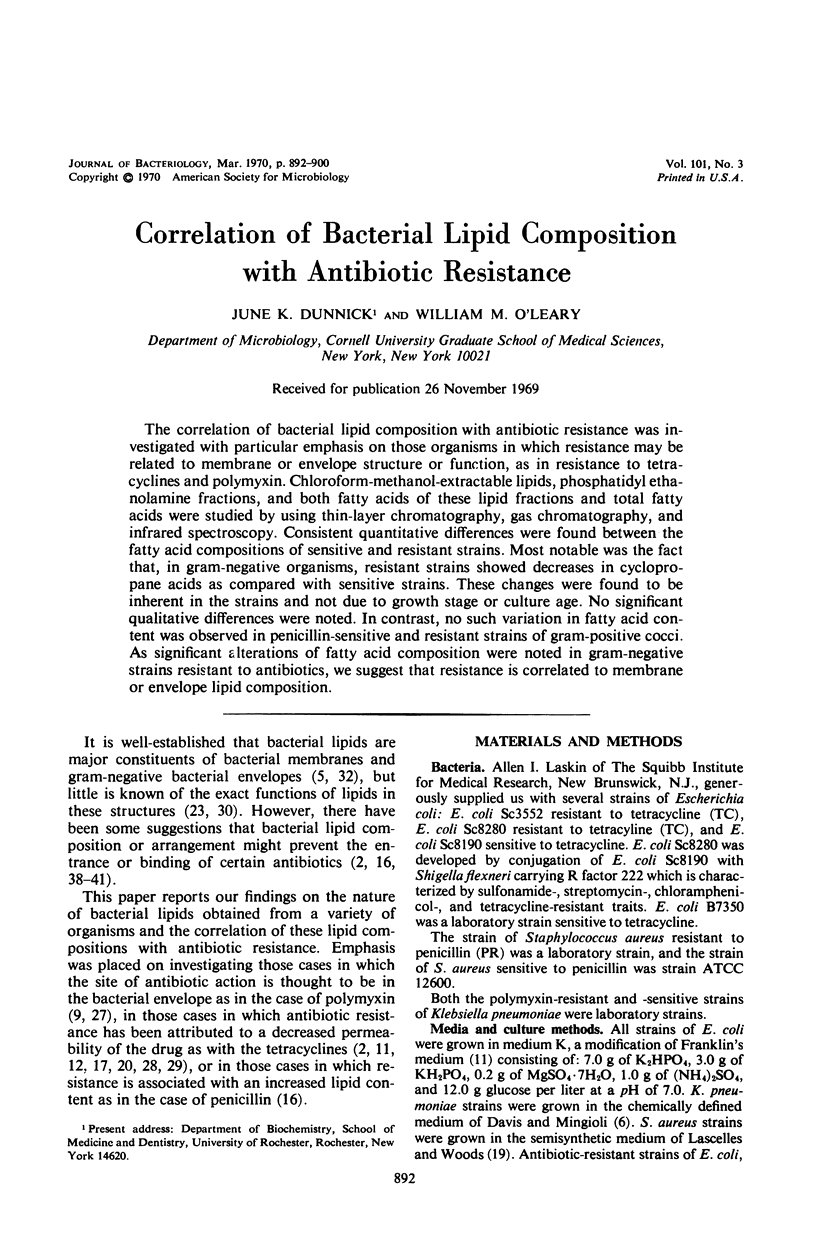
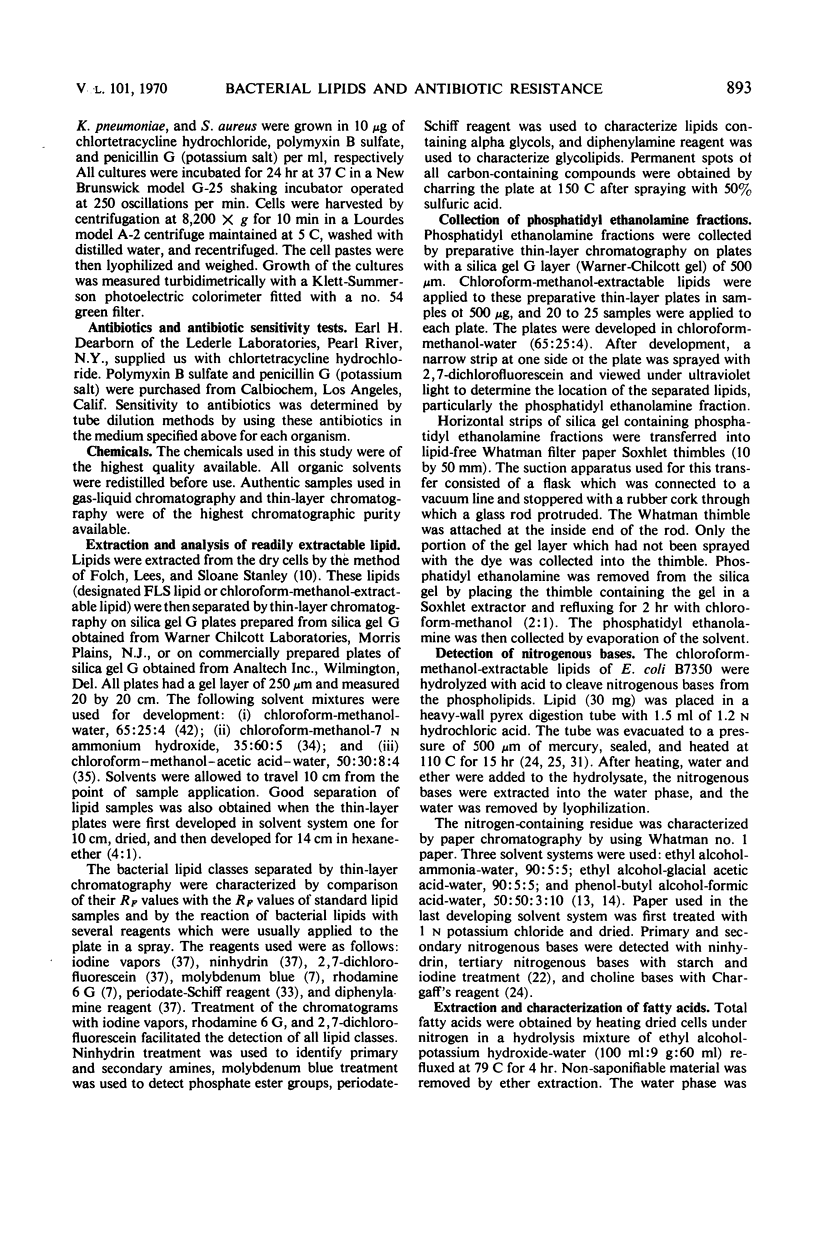
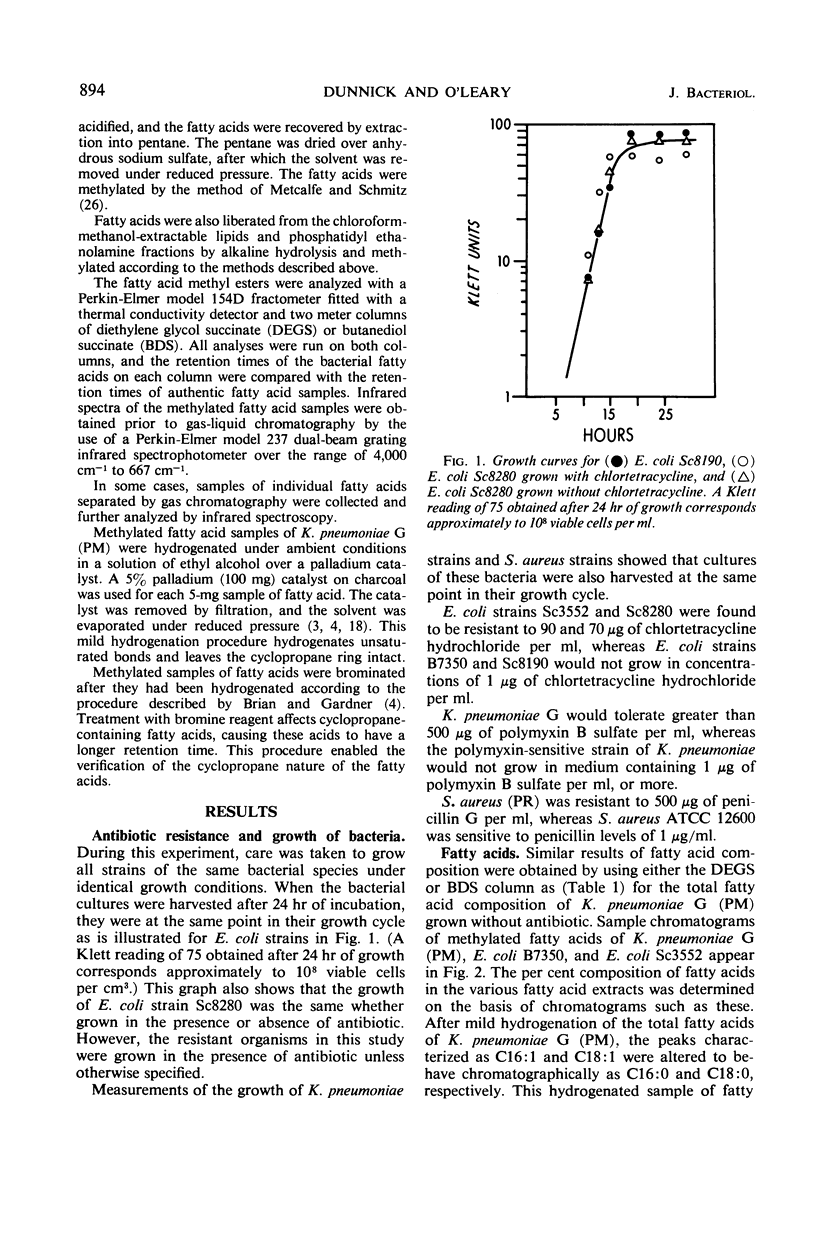
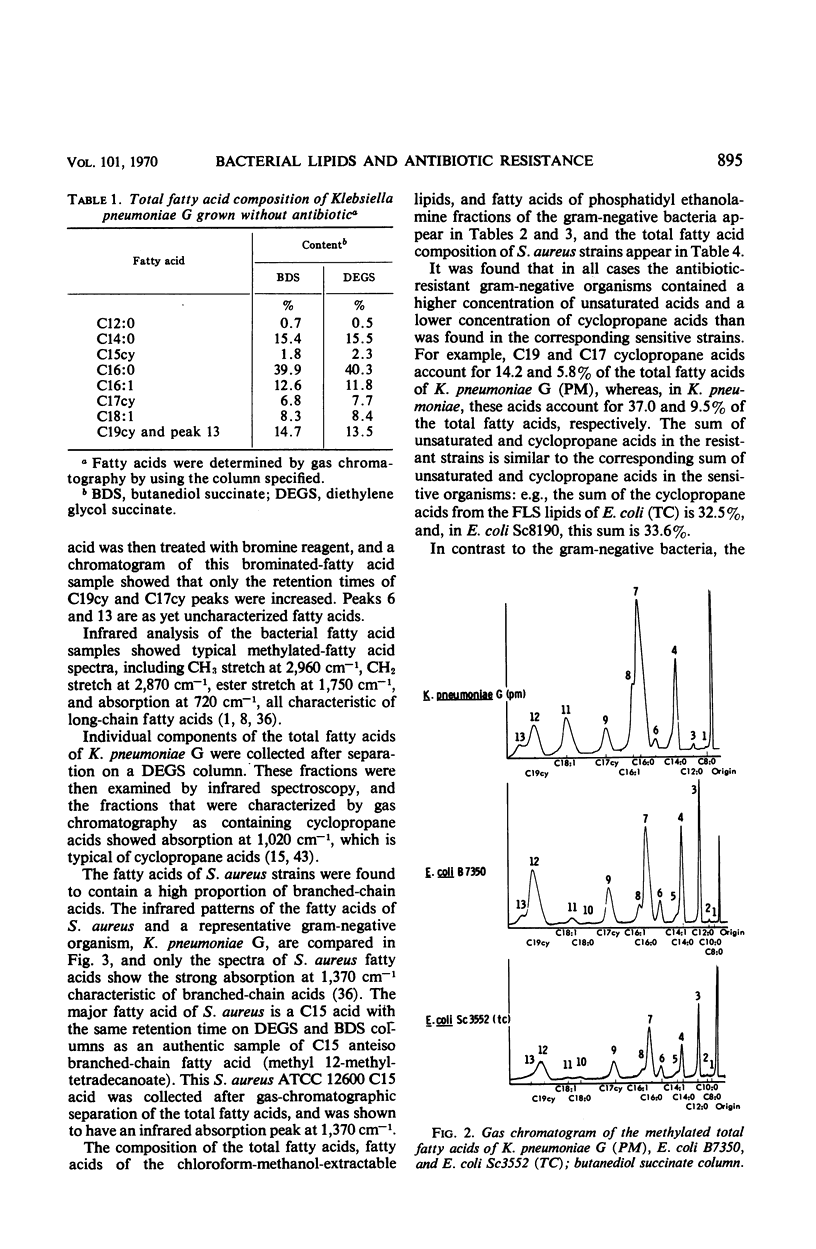
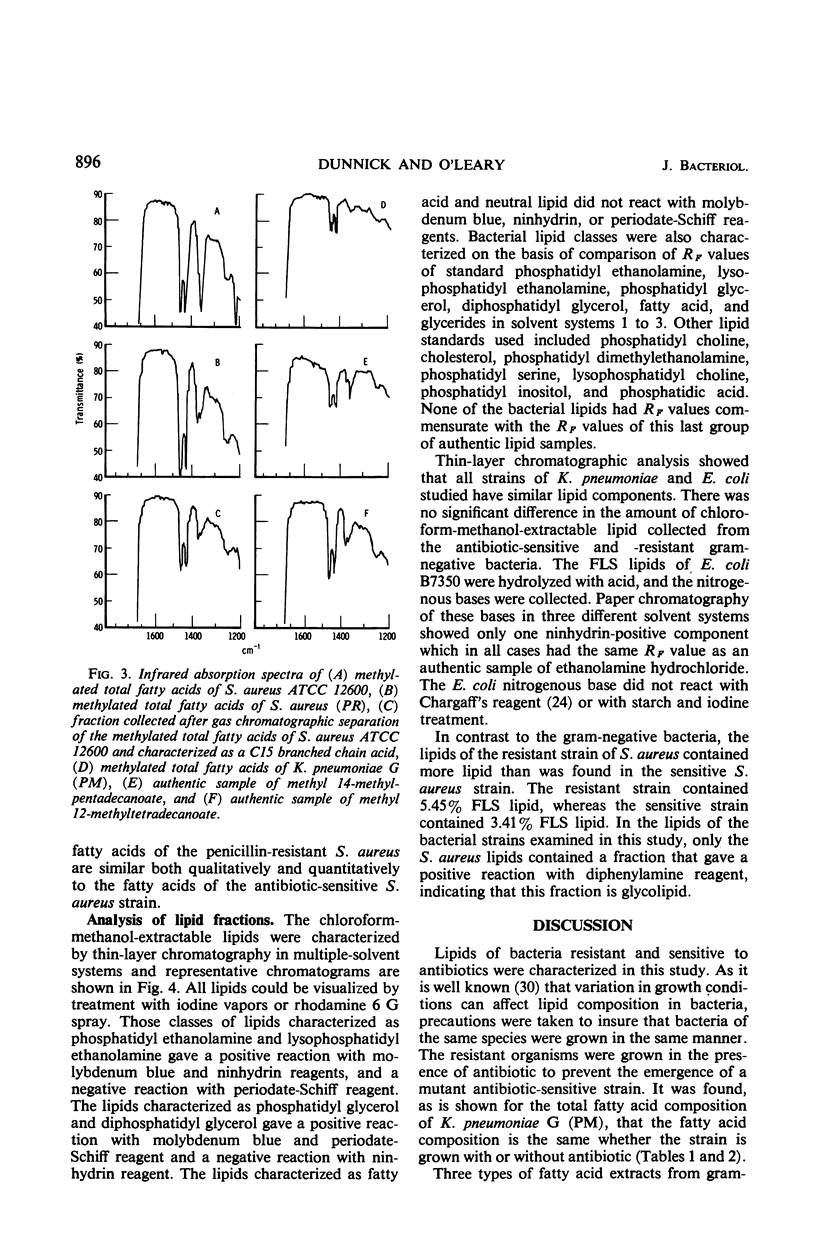
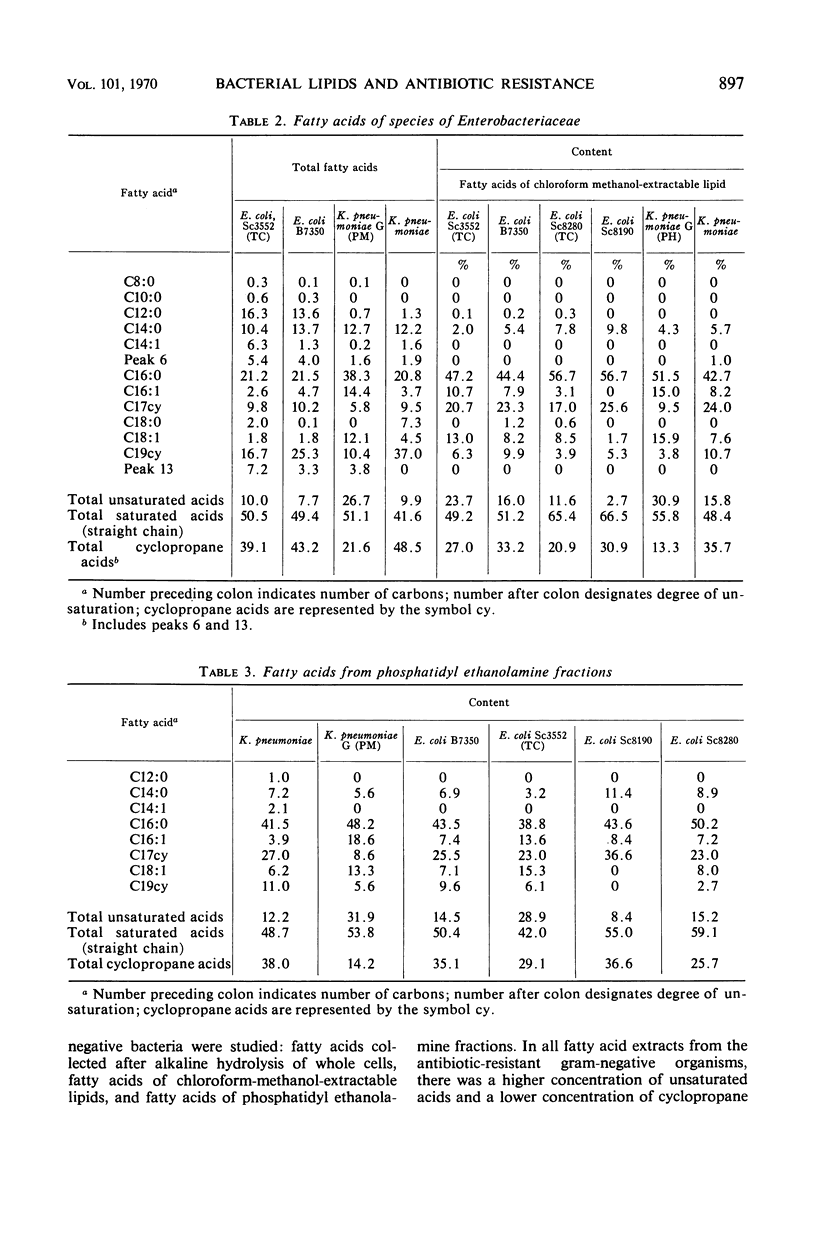
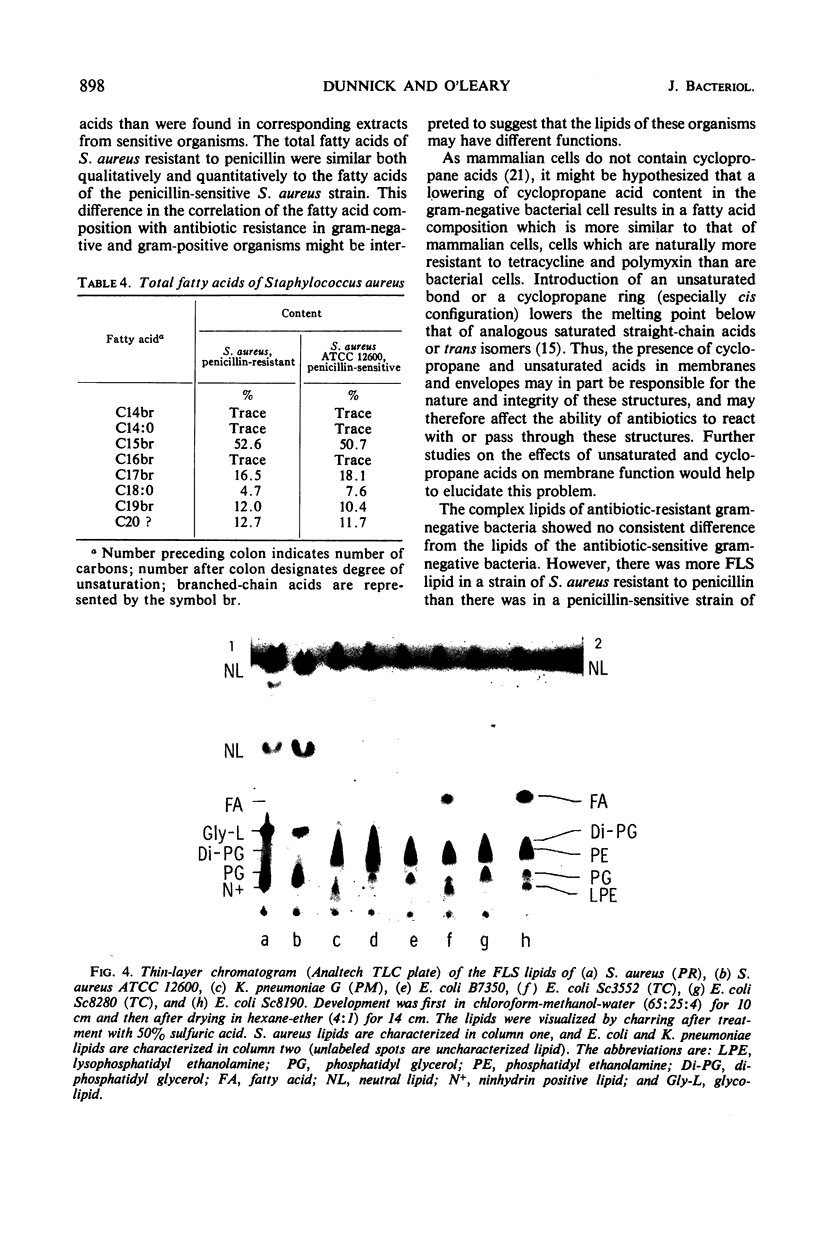
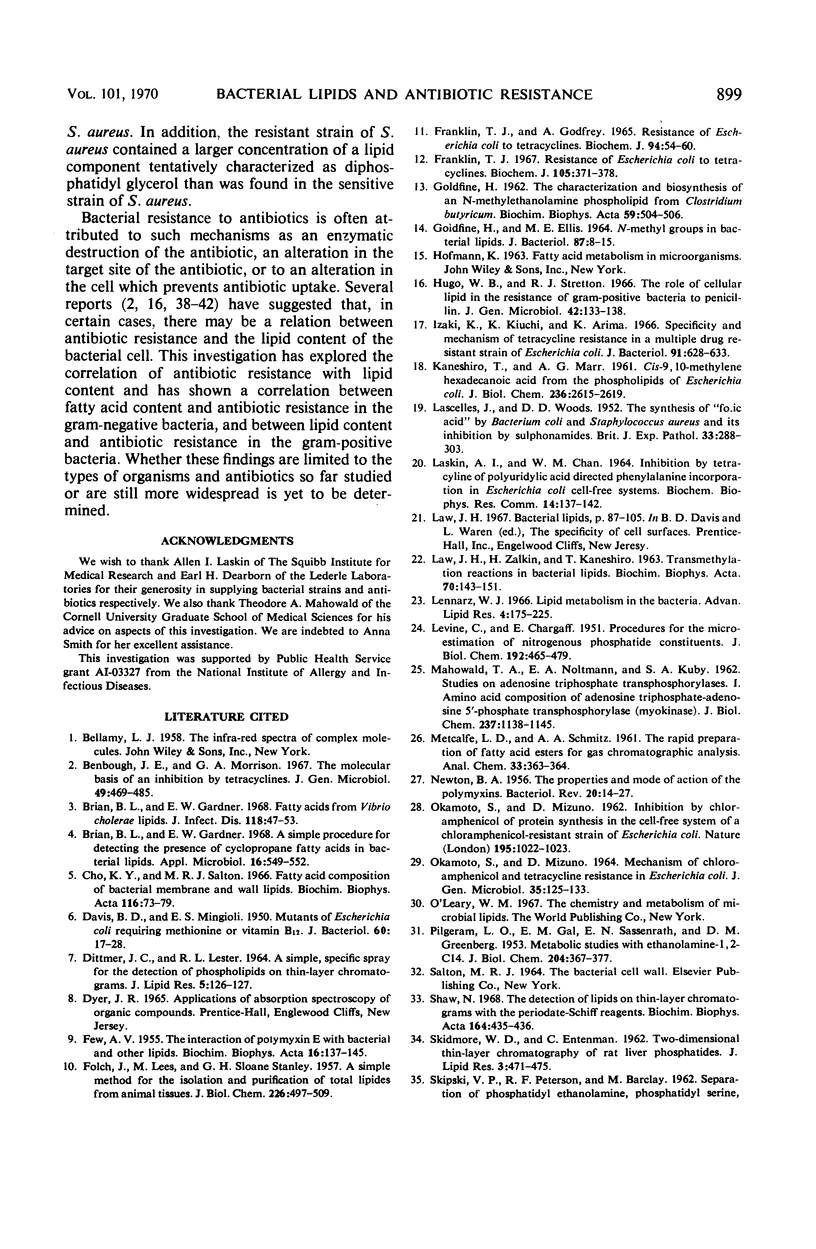
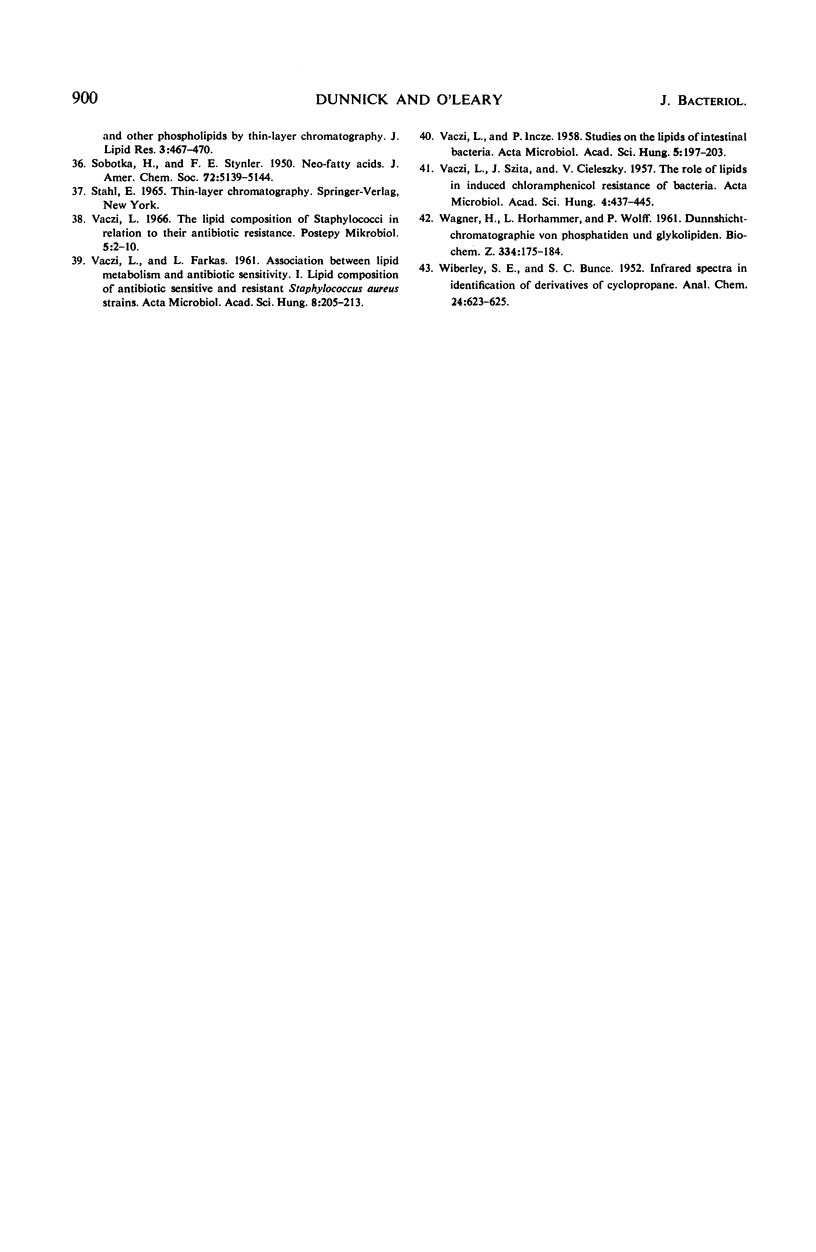
Images in this article
Selected References
These references are in PubMed. This may not be the complete list of references from this article.
- Brian B. L., Gardner E. W. A simple procedure for detecting the presence of cyclopropane fatty acids in bacterial lipids. Appl Microbiol. 1968 Apr;16(4):549–552. doi: 10.1128/am.16.4.549-552.1968. [DOI] [PMC free article] [PubMed] [Google Scholar]
- Brian B. L., Gardner E. W. Fatty acids from Vibrio cholerae lipids. J Infect Dis. 1968 Feb;118(1):47–53. doi: 10.1093/infdis/118.1.47. [DOI] [PubMed] [Google Scholar]
- Cho K. Y., Salton M. R. Fatty acid composition of bacterial membrane and wall lipids. Biochim Biophys Acta. 1966 Feb 1;116(1):73–79. doi: 10.1016/0005-2760(66)90093-2. [DOI] [PubMed] [Google Scholar]
- DAVIS B. D., MINGIOLI E. S. Mutants of Escherichia coli requiring methionine or vitamin B12. J Bacteriol. 1950 Jul;60(1):17–28. doi: 10.1128/jb.60.1.17-28.1950. [DOI] [PMC free article] [PubMed] [Google Scholar]
- DITTMER J. C., LESTER R. L. A SIMPLE, SPECIFIC SPRAY FOR THE DETECTION OF PHOSPHOLIPIDS ON THIN-LAYER CHROMATOGRAMS. J Lipid Res. 1964 Jan;5:126–127. [PubMed] [Google Scholar]
- FEW A. V. The interaction of polymyxin E with bacterial and other lipids. Biochim Biophys Acta. 1955 Jan;16(1):137–145. doi: 10.1016/0006-3002(55)90191-8. [DOI] [PubMed] [Google Scholar]
- FOLCH J., LEES M., SLOANE STANLEY G. H. A simple method for the isolation and purification of total lipides from animal tissues. J Biol Chem. 1957 May;226(1):497–509. [PubMed] [Google Scholar]
- FRANKLIN T. J., GODFREY A. RESISTANCE OF ESCHERICHIA COLI TO TETRACYCLINES. Biochem J. 1965 Jan;94:54–60. doi: 10.1042/bj0940054. [DOI] [PMC free article] [PubMed] [Google Scholar]
- Franklin T. J. Resistance of Escherichia coli to tetracyclines. Changes in permeability to tetracyclines in Escherichia coli bearing transferable resistance factors. Biochem J. 1967 Oct;105(1):371–378. doi: 10.1042/bj1050371. [DOI] [PMC free article] [PubMed] [Google Scholar]
- GOLDFINE H., ELLIS M. E. N-METHYL GROUPS IN BACTERIAL LIPIDS. J Bacteriol. 1964 Jan;87:8–15. doi: 10.1128/jb.87.1.8-15.1964. [DOI] [PMC free article] [PubMed] [Google Scholar]
- GOLDFINE H. The characterization and biosynthesis of an N-methylethanolamine phospholipid from Clostridium butyricum. Biochim Biophys Acta. 1962 May 21;59:504–506. doi: 10.1016/0006-3002(62)90212-3. [DOI] [PubMed] [Google Scholar]
- Hugo W. B., Stretton R. J. The role of cellular lipid in the resistance of gram-positive bacteria to penicillins. J Gen Microbiol. 1966 Jan;42(1):133–138. doi: 10.1099/00221287-42-1-133. [DOI] [PubMed] [Google Scholar]
- Izaki K., Kiuchi K., Arima K. Specificity and mechanism of tetracycline resistance in a multiple drug resistant strain of Escherichia coli. J Bacteriol. 1966 Feb;91(2):628–633. doi: 10.1128/jb.91.2.628-633.1966. [DOI] [PMC free article] [PubMed] [Google Scholar]
- KANESHIRO T., MARR A. G. cis-9,10-Methylene hexadecanoic acid from the phospholipids of Escherichia coli. J Biol Chem. 1961 Oct;236:2615–2619. [PubMed] [Google Scholar]
- LASCELLES J., WOODS D. D. The synthesis of folic acid by Bacterium coll and Staphylococcus aureus and its inhibition by sulphonamides. Br J Exp Pathol. 1952 Jun;33(3):288–303. [PMC free article] [PubMed] [Google Scholar]
- LEVINE C., CHARGAFF E. Procedures for the microestimation of nitrogenous phosphatide constituents. J Biol Chem. 1951 Oct;192(2):465–479. [PubMed] [Google Scholar]
- Laskin A. I., May Chan W. Inhibition by tetracyclines of polyuridylic acid directed phenylalanine incorporation in Escherichia coli cell-free systems. Biochem Biophys Res Commun. 1964;14:137–142. doi: 10.1016/0006-291x(64)90243-8. [DOI] [PubMed] [Google Scholar]
- Lennarz W. J. Lipid metabolism in the bacteria. Adv Lipid Res. 1966;4:175–225. doi: 10.1016/b978-1-4831-9940-5.50012-0. [DOI] [PubMed] [Google Scholar]
- MAHOWALD T. A., NOLTMANN E. A., KUBY S. A. Studies on adenosine triphosphate transphosphorylases. I. Amino acid composition of adenosine triphosphate-adenosine 5'-phosphate transphosphorylase (myokinase). J Biol Chem. 1962 Apr;237:1138–1145. [PubMed] [Google Scholar]
- NEWTON B. A. The properties and mode of action of the polymyxins. Bacteriol Rev. 1956 Mar;20(1):14–27. doi: 10.1128/br.20.1.14-27.1956. [DOI] [PMC free article] [PubMed] [Google Scholar]
- OKAMOTO S., MIZUNO D. Inhibition by chloramphenicol of protein synthesis in the cell-free system of a chloramphenicol-resistant strain of Escherichia coli. Nature. 1962 Sep 8;195:1022–1023. doi: 10.1038/1951022a0. [DOI] [PubMed] [Google Scholar]
- OKAMOTO S., MIZUNO D. MECHANISM OF CHLORAMPHENICOL AND TETRACYCLINE RESISTANCE IN ESCHERICHIA COLI. J Gen Microbiol. 1964 Apr;35:125–133. doi: 10.1099/00221287-35-1-125. [DOI] [PubMed] [Google Scholar]
- PILGERAM L. O., GAL E. M., SASSENRATH E. N., GREENBERG D. M. Metabolic studies with ethanolamine-1,2-C14. J Biol Chem. 1953 Sep;204(1):367–377. [PubMed] [Google Scholar]
- Shaw N. The detection of lipids on thin-layer chromatograms with the periodate-Schiff reagents. Biochim Biophys Acta. 1968 Oct 22;164(2):435–436. doi: 10.1016/0005-2760(68)90171-9. [DOI] [PubMed] [Google Scholar]
- VACZI L., FARKAS L. Association between lipid metabolism and antibiotic sensitivity. I. The lipid composition of antibiotic sensitive and resistant Staphy lococcus aureus strains. Acta Microbiol Acad Sci Hung. 1961;8:205–213. [PubMed] [Google Scholar]
- VACZI L., INCZE P. Studies on the lipids of intestinal bacteria. Acta Microbiol Acad Sci Hung. 1958;5(2):197–203. [PubMed] [Google Scholar]
- VACZI L., SZITA J., CIELESZKY V. The role of lipids in induced chloramphenicol resistance of bacteria. Acta Microbiol Acad Sci Hung. 1957;4(4):437–445. [PubMed] [Google Scholar]



